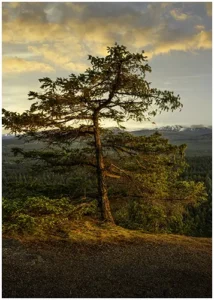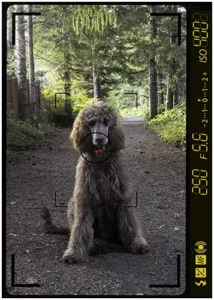
Photographing Strathcona Park Vancouver Island’s Stunning Wilderness
Did you know Strathcona Park on Vancouver Island is a photographer’s paradise? The park has


In photography, light and shadow are essential for creating captivating photos. It’s important to grasp the balance between light and shadow. This helps avoid producing dull and uninteresting images. As photographers, we leverage the morning light and techniques of light and shadow to craft mesmerizing landscape scenes that exude depth and dynamism. Depth, dimension, and emotion draw viewers into a scene as if they were standing within it.
Employing the contrasting elements of light and dark in a landscape is essential for capturing the essence and texture of natural beauty in photography. Master creative composition techniques to effectively communicate a narrative that is greater than the sum of its individual elements. Prepare to improve your photography abilities by mastering light and shadow techniques, as well as utilizing various lighting styles to craft compelling and meaningful visual narratives. Poignant narratives are created through the effective use of light and shadow, highlighting the importance of composition in landscape photography.
Natural light, which varies throughout the day, plays a crucial role in the composition and contrast of your photos. We all know the best moments for landscape photos are in the early morning or late evening. This natural illumination adds depth and character to the outdoor scene, making it even more captivating. To improve the perception of depth and reduce the visibility of harsh shadows, it is crucial to introduce a softer and strategically placed lighting arrangement. Conversely, if you are “that type,” artificial light sources or studio equipment offer more control over lighting effects, allowing for the manipulation of shadows and highlights.
FYI, I love outdoor flash photography when shooting weddings or portraits. I hang my head in shame.
The direction from which light hits your subject significantly affects the mood and texture of the landscape. Utilizing various lighting techniques, such as side lighting, backlighting, and oblique lighting, has the power to completely transform your photography. The direction of light plays a pivotal role in creating captivating effects in landscapes. Side lighting enhances textures and contours; backlighting creates silhouettes and highlights edges; and oblique lighting provides a balanced effect by adding depth without creating harsh shadows. Understanding these effects can help you choose the best time and angle to capture your landscapes.
Photography employs a wide array of light variants, each distinguished by its origin, diffusion, and intensity. Such an extensive range showcases the captivating variety and intricate subtleties of lighting in the realm of photography. Hard light results in sharp, clear shadows and is often used to highlight texture and form. Soft light beautifully captures delicate details, creating a gentle and seamless transition between light and shadow. Use polarizers or neutral-density filters to modify the light, enhancing the artistic effect of your landscape photos.
By mastering these lighting aspects, you can enhance your landscape photography with visually appealing images rich in depth, thanks to the thoughtful use of light and shadow techniques.
Shadows are not just about the absence of light; they can emphasize the main subjects and enhance the dark landscapes, transforming the scene into a compelling narrative composition. Shadows can effectively simplify images by hiding unnecessary details and directing the viewer’s attention. In photography, shadows play a crucial role, as they contribute to creating contrast by concealing less significant elements and emphasizing the main subjects. Furthermore, they sometimes play a vital role in creating visual balance by guiding the viewer’s attention.
Furthermore, shadows can radically alter the mood and tone of your photos. The use of contrast can impact a photo and emphasize the light and shadows. It has the remarkable ability to elevate a simple scene into a breathtaking image, especially when capturing dramatic landscapes. Shadows emphasize texture and layers in the landscape, creating a sense of depth and adding visual interest. This aspect is a fundamental technique in landscape photography, where shadows play a pivotal role. Shadows can add a three-dimensional feel, which counters the flatness often associated with photographs.
Creatively managing shadows can result in captivating compositions. They can act as a focal point themselves. In landscape photography, shadows can subtly shift or enhance the existing focal points, directing attention smoothly to areas of interest. This technique, a cornerstone of light and shadow photography, allows for a more dynamic composition. Within light and shadow in landscape photography, shadows are strategically used to create a sense of mystery and anticipation. They partially reveal or conceal subjects, adding intrigue. This method enhances landscape photography by turning it into a piece of art that captivates the viewer’s attention and encourages deeper reflection.
Balancing light and shadow is essential for compelling landscape photos. Here are some techniques and considerations for managing these elements, underscoring the importance of mastering light and shadow photography.
By applying these techniques, you can transform a standard shot into a striking composition that captures the viewer’s attention through a well-executed balance of light and shadow. This approach is fundamental in landscape photography, where the dynamic between light and shadow plays a critical role.
Shadows in landscape photography are not merely the absence of light; they are powerful tools that can shape the narrative of an image. Using shadows creatively to emphasize specific elements in a scene or to convey strong emotions can be a difficult technique to master in photography. It’s a strategy that leverages the strengths of light and shadow within the context to tell a more compelling story.
Silhouettes are another compelling use of shadows, where subjects are backlit against a bright backdrop. This method highlights the outline of the subject while keeping the details hidden, creating a sense of mystery and intrigue. Such images are particularly striking in light and shadow photography and landscape photography, drawing viewers in as they try to decipher the story behind the silhouette.
Furthermore, playing with the colours and intensity of shadows can add a unique flair to your photos, especially when photographing landscapes under the changing light of clouds and sunsets. This technique is also effective in portrait photography, where the interplay of light and shadow can dramatically alter the mood and tone of the image. By manipulating shadows, you can create photos that are not only appealing but also emotionally engaging and thought-provoking, a hallmark of both light and shadow photography and landscapes.
In landscape photography, managing artificial light can be tricky, but with a few clever solutions, you’ll be taking stunning shots in no time. Let’s dive into some tips to conquer this challenge and make your landscapes shine!
Throughout this exploration of light and shadow in landscape photography, we’ve navigated the intricate dance between illumination and shade, uncovering techniques to harness their power for creating emotionally resonant and visually compelling images. The journey has illustrated not only how light shapes the mood and texture of our photographs but also how shadows add depth, narrative, and a sense of mystery, guiding the viewer’s eye and emphasizing the composition’s key features. By delving into the various types of light, the significance of shadows, and balancing techniques, we’ve armed ourselves with the knowledge to elevate our photographic work, transforming ordinary landscapes into extraordinary stories.
In the end, the mastery of light and shadow is a testament to your skill in visual storytelling, offering a canvas upon which to sculpt with luminance and darkness in landscape photography. The strategies discussed ranged from adjusting camera settings to creative uses of light and shadows. As we continue to explore the boundless possibilities within the realm of photography, let these insights serve as a beacon, guiding us toward crafting images that are not only seen but deeply felt, encouraging us to view our surroundings in a new light through the lens of light and shadow photography.
In the realm of photography, mastering light and shadow photography is key to creating a visual impact. Light enhances the brightness and visibility of images, while shadows introduce depth and drama, particularly in landscape photography. Achieving a harmonious balance between light and shadow is essential for adding dimension and enhancing the overall appeal of the photo.
To effectively capture the interplay of light and shadow in landscape photography, adjusting your camera settings is crucial for optimal results. You should maintain a fast shutter speed, keep the ISO setting low, and use a relatively closed aperture. Starting with an aperture setting around f/8 or higher is recommended, especially for mastering light and shadow photography. Experimentation may be necessary to fine-tune these settings to suit your specific style..
Artists frequently employ various methods to emphasize light and shadow in their work, with chiaroscuro being a popular technique. This method, significant in both light and shadow photography and landscape photography, involves dramatic contrasts between light and dark areas to create a sense of three-dimensionality by highlighting bright areas and deepening shadows.

Did you know Strathcona Park on Vancouver Island is a photographer’s paradise? The park has

Aspect ratio in photography helps shape 80% of the images we remember. This paves the

Are you curious about the importance of ISO in photography? Dive into the fascinating realm